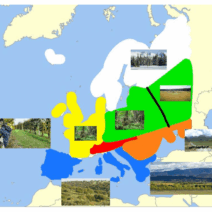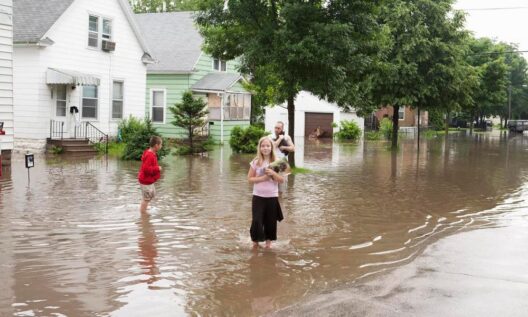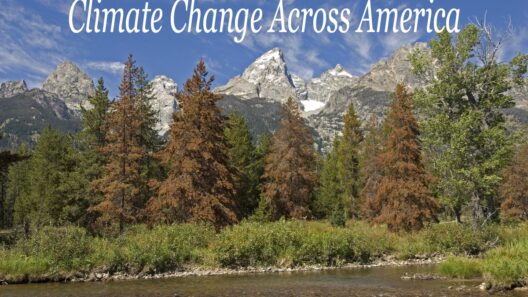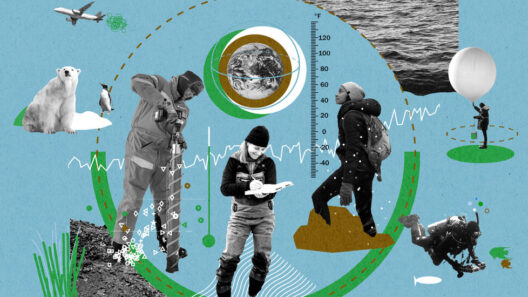The theory of climate change serves as a crucial lens through which we can observe and comprehend the rapid transformations occurring on our planet. Much like a grand tapestry, woven from countless threads of interactions between the atmosphere, oceans, land, and living beings, the theory encapsulates a multitude of scientific principles, implications, and ramifications. Understanding this intricate structure not only enlightens us about the present state of our environment but also forewarns us of the potential future that looms ahead.
At its core, climate change refers to significant alterations in global or regional climate patterns, especially those that transpire over prolonged durations. It manifests primarily through rising temperatures, shifting weather patterns, increased frequency of extreme weather events, and alterations in ecosystems. These changes can be likened to a symphony, where each section—string, brass, woodwind, and percussion—contributes to an overall piece. If one instrument is played out of tune or goes silent, it disrupts the harmony. Similarly, when elements of our climate system deviate from their natural rhythms, the repercussions resonate throughout the world.
The driving force behind much of contemporary climate change is anthropogenic influence—human activities that release greenhouse gases into the atmosphere. The combustion of fossil fuels for energy, deforestation for agriculture, and industrial processes contribute to an ever-thickening blanket of carbon dioxide, methane, and nitrous oxide, causing temperatures to rise. This is akin to wrapping our planet in a warm blanket to stave off the chill, only to find that the extra warmth becomes unbearable.
To delve deeper into this phenomenon, it is essential to understand the greenhouse effect. This natural mechanism allows for the Earth to maintain temperatures conducive to life. Solar radiation reaches the Earth, with some of this energy reflected back into space while the remainder is absorbed, warming the planet. Greenhouse gases trap a portion of this heat, preventing it from escaping into the atmosphere. However, with the increased concentration of these gases due to human actions, the balance is disrupted. Imagine a glasshouse, where too much sunlight breeds an overly warm environment suitable for certain plants but inhospitable for others. Consequently, this rise in temperature triggers a cascade of changes, affecting everything from sea levels to biodiversity.
Climate change does not adhere to national boundaries. It operates on a global scale, akin to an expansive ocean that connects continents. One country’s decision to ignore its carbon footprint affects the rest of the world deeply, much like a ripple in water can disturb the stillness of distant shores. For example, the melting of polar ice caps, a direct consequence of rising global temperatures, contributes to rising sea levels that threaten coastal communities worldwide. The metaphorical dam holding back the rising tide is beginning to crack, and if we do not act collectively, we risk an inundation that will reshape our geographical landscape.
Consider the realm of agriculture, another domain profoundly touched by climate change. Shifting precipitation patterns and increasing temperatures can result in droughts, floods, and unpredictable growing seasons, akin to a deck of cards being shuffled without warning. Farmers are left to adapt to an ever-changing climate, their livelihoods hanging in a precarious balance. This unpredictability not only threatens food security but also disrupts local economies and global supply chains.
An equally unsettling consequence of climate change is its impact on biodiversity. Ecosystems operate on a delicate equilibrium; they are intimately connected, and the loss of one species can trigger a domino effect across the food web. As temperatures rise and habitats are altered, countless species are forced to adapt, migrate, or face extinction. This is reminiscent of a game of musical chairs—when the music stops, there simply may not be enough chairs for every species to occupy. Our planet’s biodiversity is dwindling at an alarming rate, signaling potential ecological collapse. Every lost species diminishes the robust symphony of life that has thrived for millennia.
In response to the stark realities of climate change, a global movement has emerged advocating for sustainability and resilience. Pioneers in renewable energy—solar, wind, and geothermal—are creating innovative alternatives that emulate nature’s regenerative processes. This transition is comparable to a phoenix rising from the ashes; with the right commitment and action, humanity can forge a new path that respects and nurtures the environment. Embracing green technology, conserving resources, and fostering biodiversity are paramount to reversing the damaging trends we have initiated.
Moreover, education plays a pivotal role in combating climate change. By raising awareness and encouraging collective action, communities can mobilize to confront the challenges posed by climate change. This grassroots activism is akin to widespread ripples on the ocean; each individual effort contributes to a larger movement that can ultimately redirect the course of history. Empowering the next generation with knowledge and tools necessary for them to thrive in a changing environment is a critical investment.
In conclusion, the theory of climate change portrays not merely a narrative of despair but also one of hope and potential. It invites us to reimagine our relationship with the planet, urging us to take heed of the symbiotic connections that bind us to the Earth. As we confront the myriad challenges that accompany climate change, we must act with intention and purpose. The time to weave a more sustainable tapestry is now, for every thread of effort counts in the grand design of our future. Only together can we harmonize our existence with the planet, ensuring that life continues to flourish for generations to come.








